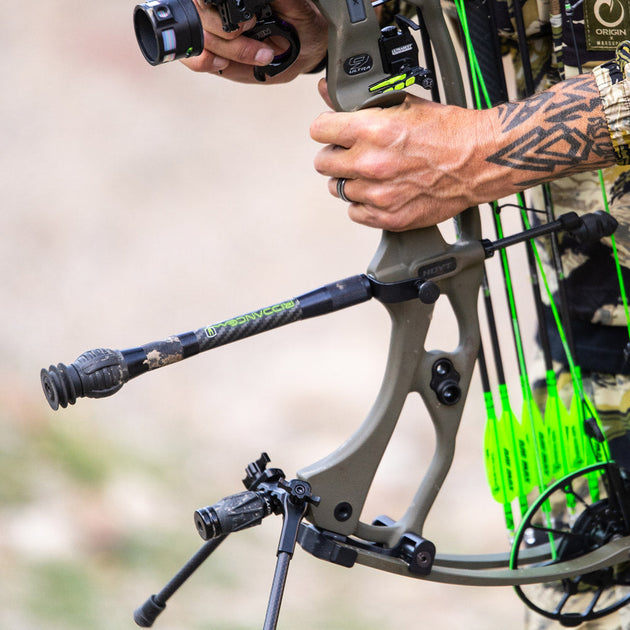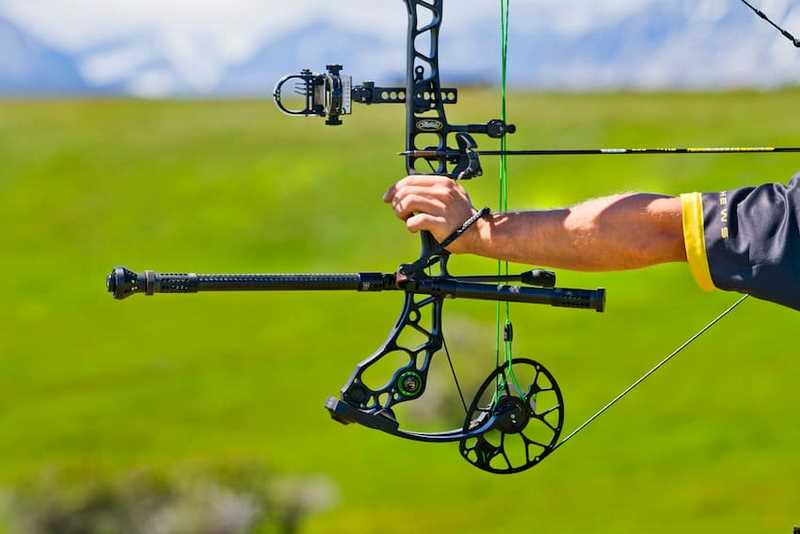Archery Stabilizer Fundamentals: Improving Your Shooting Experience
Archery Stabilizer Fundamentals: Improving Your Shooting Experience
Blog Article
Maximize Your Archery Performance With the Perfect Stabilizer: an Extensive Purchaser's Guide
In this extensive customer's guide, we will certainly check out the different types of stabilizers, crucial factors to consider, the importance of proper length and weight, selecting the best damping system, and upkeep pointers. Whether you're an experienced archer or just starting out, this overview will assist you navigate the globe of stabilizers and maximize your archery efficiency.
Sorts Of Stabilizers
There are three major kinds of stabilizers commonly utilized in archery performance. These stabilizers play a critical role in enhancing accuracy and lowering bow torque. The first type is the long rod stabilizer.
The second type of stabilizer is the side pole stabilizer. Side rod stabilizers are connected to the side of the bow and assistance counterbalance any type of lateral movements.
The third sort of stabilizer is the V-bar stabilizer. V-bar stabilizers are typically used in conjunction with side rod stabilizers to further boost security. They connect to the side and the bow poles, developing a triangular arrangement that disperses weight uniformly. This configuration helps in reducing oscillations and vibrations, leading to a smoother and much more controlled shot.
Understanding the various sorts of stabilizers is vital when selecting the best tools to maximize archery efficiency. Each stabilizer type offers a certain purpose, and picking the proper combination can significantly boost accuracy and consistency on the array or in the field.
Key Aspects to Consider

First and primary, it is necessary to take into consideration the size and weight of the stabilizer. Longer stabilizers offer raised security and equilibrium, while shorter ones use more maneuverability. The weight of the stabilizer influences the overall balance of the bow, and it is necessary to discover a stabilizer that matches the weight of your bow.
One more vital variable to take into consideration is the product of the stabilizer. Stabilizers are commonly made from light weight aluminum, carbon, or a mix of both. Light weight aluminum stabilizers are sturdy and give superb vibration dampening, while carbon stabilizers are lightweight and offer superior vibration absorption.
Furthermore, it is necessary to evaluate the design and adjustability of the stabilizer. Some stabilizers include adjustable weights and dampeners, allowing you to tailor the equilibrium and resonance control. Furthermore, considering the mounting alternatives and compatibility with your bow is important to guarantee a correct and safe fit.
Finally, budget is a significant element to think about. Stabilizers come in an array of costs, and it is essential to find one that fits within your spending plan while still satisfying your efficiency needs.
Value of Proper Size and Weight

Appropriate size and weight are essential elements that substantially influence the efficiency of an archery stabilizer. The size of the stabilizer determines its effectiveness in decreasing bow torque and vibrations. archery stabilizer. Longer stabilizers supply higher stability and balance, leading to enhanced precision and consistency in arrow flight. On the other hand, shorter stabilizers are much more maneuverable and provide much better control during rapid target acquisition. For that reason, it is necessary to take into consideration the shooting design, target range, and individual choice when picking the size of a stabilizer.
Similarly, the weight of the stabilizer plays an essential duty in achieving optimum performance. A much heavier stabilizer absorbs a lot more resonance and reduces bow movement during the shot, resulting in a steadier aim and tighter teams.
Moreover, the length and weight of the stabilizer need to be compatible with the archer's physical toughness and shooting method. By picking the best size and weight, archers can see post maximize their stability, minimize bow torque, improve accuracy, and enhance total performance. It is suggested to seek advice from knowledgeable archers or experts to ensure the most effective suit between the stabilizer and specific capturing requirements.
Choosing the Right Damping System
The option of an appropriate damping system is critical in optimizing the performance of an archery stabilizer. A damping system is created to minimize the resonances and noise produced when an arrowhead is launched, providing the archer with a much more steady and exact shot. There are numerous factors to think about when picking the appropriate damping system for your stabilizer.
Firstly, it is very important to take into consideration the sort of product used in the damping system. Rubber and rubber-like materials are typically utilized because of their capability to absorb vibration properly. These products are lightweight and additionally resilient, making them suitable for archery stabilizers.
Second of all, the style of the damping system must be taken into account (archery stabilizer). Search for a system that offers multiple call factors with the stabilizer, as this will distribute the vibrations a lot more uniformly and even more enhance the stabilizer's performance
Furthermore, think about the adjustability of the damping system. Being able to fine-tune the degree of damping can be helpful, as various archers may have differing preferences and shooting styles.
Last but not least, it is very important to guarantee that the picked damping system works with your stabilizer. Inspect the specs and dimensions to make certain an appropriate fit.
Maintenance and Treatment Tips
To ensure optimum performance and durability of your archery stabilizer, it is vital to carry out appropriate maintenance and treatment methods. Regular upkeep not just prevents wear and tear yet additionally helps recognize any type of potential problems before they come to be major issues. Among the initial steps in maintaining your stabilizer is to clean it frequently. Make use of a soft towel or brush to remove dust, dirt, and debris from the stabilizer and its elements. Pay unique attention to the weight system, as dirt can gather in the threads and impact its performance. In addition, inspect all the parts of the stabilizer for any kind of signs of damage or wear, such as fractures or loosened screws. It is vital to resolve them quickly to stop further damage if any concerns are identified. Lubricating the moving parts of the stabilizer, such as the dampers and weight system, is likewise crucial to make certain smooth operation. Utilize a top notch lubricating substance advised by official website the manufacturer and follow the instructions offered. Finally, shop your stabilizer in a trendy, completely dry area far from straight sunshine and severe temperature levels to stop bending or various other damages. By complying with these upkeep and care suggestions, you can maximize the performance and longevity of your archery stabilizer.
Verdict
Finally, selecting the right stabilizer for archery is critical for optimizing web link efficiency. By taking into consideration variables such as stabilizer kind, size, weight, and damping system, archers can improve their accuracy and security. Furthermore, appropriate upkeep and treatment of the stabilizer is important for its longevity and optimal functioning. With the ideal stabilizer and correct attention to these factors, archers can improve their overall archery experience.
The second kind of stabilizer is the side rod stabilizer.The third kind of stabilizer is the V-bar stabilizer. V-bar stabilizers are commonly utilized in conjunction with side rod stabilizers to further boost security. The weight of the stabilizer impacts the general balance of the bow, and it is important to find a stabilizer that complements the weight of your bow.
Light weight aluminum stabilizers are resilient and offer outstanding vibration dampening, while carbon stabilizers are lightweight and deal premium resonance absorption.
Report this page